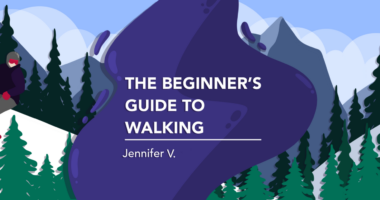A long drive triggers an NMOSD flare-up. Now what?
Knowing my medical needs saved me countless time in the emergency room

There’s no way to fully prepare for a flare-up of neuromyelitis optica spectrum disorder (NMOSD) when I’m traveling, though I try. I’ve invested in additional travel insurance when out of the country, thankfully never having to use it. I bring records of all my medications should a treating physician ask for the list. And I prepare my family to stay calm should I need medical attention.
But in this particular event, my knowledge and powers of persuasion were key.
The trigger
My daughter, Sophie, was given the opportunity to attend summer intensive classes with the prestigious Royal Winnipeg Ballet School. Not quite 11 years old, she’s not ready to spend three weeks away in a dormitory, so we decided to stay with her in Winnipeg, Canada, a 16-hour, three-day drive from Toronto, where we live. The ride was long, but beautiful. Driving from a crowded metropolitan city of 7 million people to another with fewer than 1 million helped us see how diverse our country is.
The drive home should’ve been uneventful too, but NMOSD loves to rear its ugly head at the worst moments. I thought I’d packed enough pain medication, but I underestimated what long hours in a car might do to my body.
As we started our drive home, I could feel my extremities start to go numb. My right leg tingled, and I kept trying to shake off the pins and needles. Then it started in my left leg, which started to shake uncontrollably. Before long, I was rocking my body in my seat, writhing in pain, trying to distract myself with our road trip playlist (“Sweet Caroline … bum, bum, bum”).
As we passed through the center of Canada, my husband, Mike, looked over with concern. I’m not one to admit defeat easily, but after a few more hours of agony, I knew I needed help. We drove through beautiful rock cliffs sandwiching the Trans-Canada Highway, suddenly opening to the most pristine water from Lake Superior. The road sign said 30 kilometers (18.6 miles) till Thunder Bay, and I knew that would end up being the longest 30 minutes of my life.
Thunder Bay is a northwestern Ontario city with a population of just over 100,000 people. It’s a thruway city for those driving elsewhere, and only a popular destination because there isn’t much else around it. As such, the hotels are incredibly overpriced in summer, and their quality isn’t better than the average roadside motel. I knew I was desperate when I agreed to be dropped off at the Thunder Bay emergency room.
The treatment
As I walked into the small and stuffy ER, I found a room full of people. Some were sitting while others stood around waiting for their number to be called. It was easily an eight-hour wait, for which I didn’t have the time or the patience. I stumbled up to the nurse’s station and said, “Hi. My name is Jenna. I have a rare autoimmune disease called neuromyelitis optica spectrum disorder, and I have a limited amount of time before I’m permanently paralyzed. Do you have a neurologist on-site or on-call to assist me, please?”
The nurse looked up at me, assessing if I was another demanding patient or if there was some merit to my words. He saw my hands shake and the desperation across my face and decided I was legitimate. He escorted me to the next nurse’s station, where I repeated my situation. Something about my confidence gave them confidence. I knew I was in control of the situation when the second nurse asked, “So what do you typically do in a situation like this?”
I changed my expression to one of gratitude and said, “I’m usually separated from the general population because I can’t let myself get sick from one of them. Then neurology does an examination and I’m given a pulse of Solu-Medrol [methylprednisolone sodium succinate] and some morphine for the pain before I’m released to home healthcare.”
I knew I’d just overwhelmed the nurse, but I was so confident in my response that she simply said “OK” and walked me directly to an examination suite. Five minutes in, I was hooked up to an IV line and morphine started to pump into my system. When the bag of Solu-Medrol was hooked up, I slowly felt the tremors in my extremities subside.
The reflection
I know I’m a rare unicorn. Most neurologists won’t have encountered someone like me and my NMOSD. It’s even more unlikely that neurology has met one of us in remote North Ontario communities like Thunder Bay.
Had I walked in and asked for help without knowing and demanding what I needed, I would’ve been in that hospital for at least a full day. Being confident in my needs and demonstrating my own healthcare expertise gave the professional clinicians confidence to provide me with the necessary treatment without spending hours researching the disorder.
Note: Neuromyelitis News is strictly a news and information website about the disease. It does not provide medical advice, diagnosis, or treatment. This content is not intended to be a substitute for professional medical advice, diagnosis, or treatment. Always seek the advice of your physician or other qualified health providers with any questions you may have regarding a medical condition. Never disregard professional medical advice or delay in seeking it because of something you have read on this website. The opinions expressed in this column are not those of Neuromyelitis News or its parent company, Bionews, and are intended to spark discussion about issues pertaining to neuromyelitis optica spectrum disorder (NMOSD).








Leave a comment
Fill in the required fields to post. Your email address will not be published.